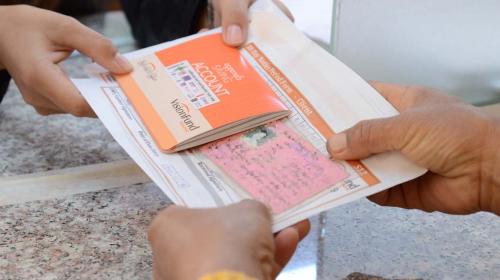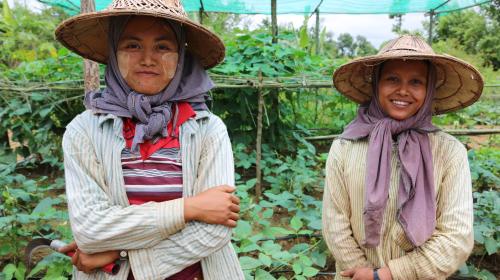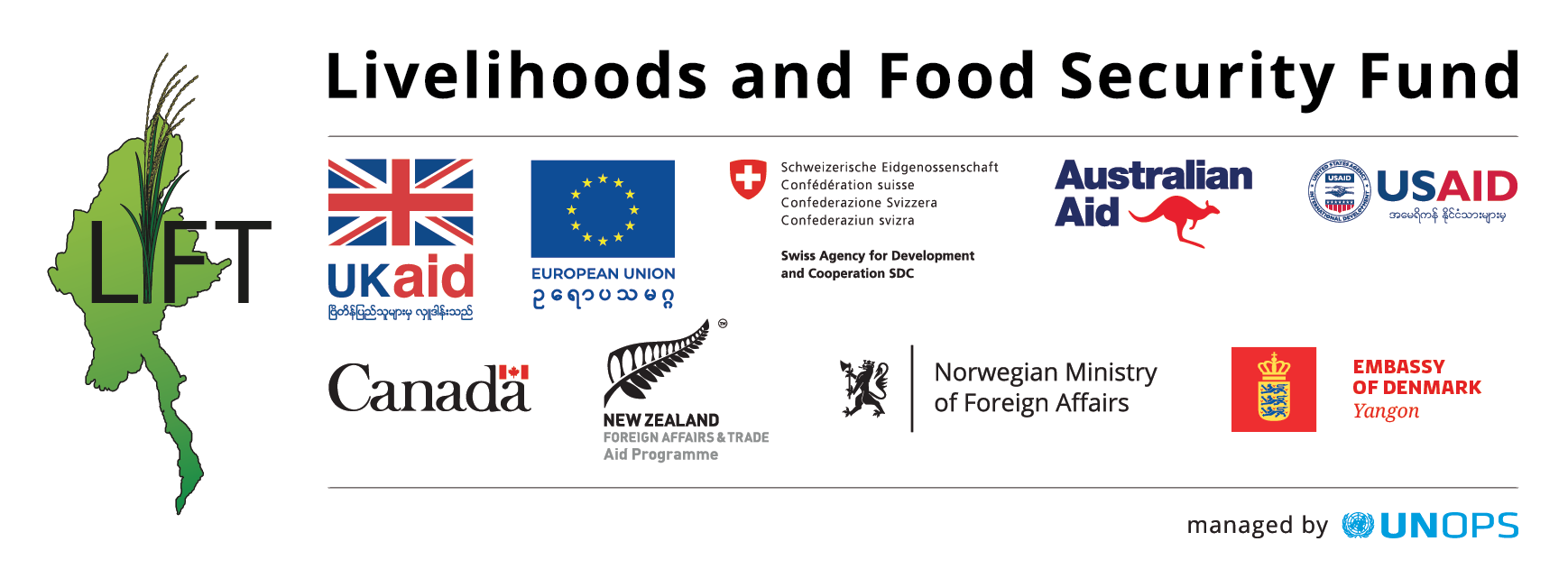
During late July and early August 2015, clouds full of rain emptied onto the Chin Hills in wave after wave. “It was continuous,“ says U Siang Awi, head of the Chin MFI lending group in Hakha town’s old quarter. “In my 60 years we’ve had rain like this but never without any break. It just didn’t have a chance to drain away.”
Some of the rain was from the tail end of Cyclone Komen, which had come ashore over the Rakhine Coast, devastating crop land and livelihoods. In the steep Chin Hills, this and the monsoon rain sunk into the soil and gathered, saturating the land so that it began to form cracks. In Hakha township, as they watched the cracks approach their homes, alarmed villagers gathered up their belongings and fled, and then the landslides commenced. Elsewhere, young rivers became torrents which broke banks and stripped away farming land, covering areas downstream in thick, hard mud. It is estimated that in the 10 days between July 24th and August 3rd, around 20,000 people in Chin had their homes or cropping land either damaged or washed away.
Six months later in the path of the landslide in Hakha towns’ old quarter, the devastation is still apparent. Many of the remaining houses are derelict, tilting at near-impossible angles, alongside a wonky church that was only finished in early 2015, and the quarter’s crumbling Natala school. “It looks as if a huge animal walked over the land causing patches of subsidence,” says Lai Uk Naul, the Manager of Chin Microfinance, or Chin MFI, a local microfinance provider that LIFT partners through the French NGO, Gret. Chin MFI aims to provide affordable and sustainable credit to poor people in northern Chin State.
Bawi Cung, age 40, owned one of the houses that is no longer there. He now lives with his wife and three school-age children in the government temporary housing camp in Hakha’s new quarter. They’ve been there since the end of July.
Life in the camp is not easy. It’s crowded and the water in the communal taps is turned on for only three hours every three days, meaning that the sanitation levels are not as the inhabitants would like. It’s noisy and there’s no privacy, ”... and the roof is made of corrugated iron. It’s very cold and every morning our blankets are wet because of the condensation,” says Bawi Cung.
He’s finding it hard to make ends meet in his new job as a carpenter – but that is mainly because of the sense of camaraderie among the 50 or so other Chin MFI lenders in the camp. They are pitching in to physically rebuild each other’s homes where possible so at least some families can go home. The government plans to rehouse the camp dwellers in a purpose- built settlement on the outskirts of town, but enthusiasm is lacking. Most people just want to go back to their land.
“Back at home, my family borrowed money from Chin MFI to raise pigs. We were doing well; if I had invested 100,000 Kyat, I made 200,000,” says Bawi Cung. “That helped me a lot. The pigs paid for household expenses, my wife’s medical bills, education for the children and food.”
Last February he took a loan of 180,000 Kyat for a pregnant pig, but when the family fled their land, they left the pigs behind. “Any surviving pigs in the quarter were rounded up after the flood and killed for food – everything was shared among the people in the camps. There was little else to eat at the time,” he says. So on top of everything else, he’s now deep in debt.
But there is good news.
What Bawi Cung and his friends will soon learn is that LIFT has funded Chin MFI to provide debt relief to flood victims, and to support Chin MFI so that it can continue its important work providing affordable credit to rural poor people.
“We’re collecting the data and planning to use the LIFT funds in three ways,“ explains Lai Uk Nawl. “To write off loans to those who have lost homes; to extend loans for six months to people who have lost assets, like pigs – and LIFT will pay interest on the loans during that period; and, finally, we will give a cash transfer to all of our clients who has suffered due to the floods to help them get back on their feet.”
The announcement will be made this week, when interest on loans would be due in normal circumstances. “We’ll hold a special meeting,” says Lai Uk Nawl, and adds softly, “They will all be so happy. Some of them will cry.”
LIFT has contributed over $4 million to livelihoods recovery after the floods since August 2015, mainly supporting microfinance partners to assist their clients in a mixture of debt relief, debt restructure and cash transfers. Other partners have provided farming inputs and reinstated cropping land through cash for work.
Read LIFT’s flood recovery funding announcements from September and December.
Other Chin MFI clients who have lost their assets in the floods:
Daw Ngun Hlei Tial (on the right), her carpenter husband and their four children live in a tent on the site of where her house was washed away. She had built a small snack shop at the front of her house using Chin MFI loans over the past seven years, but that is also gone.
Daw Hning Chin Par (left) had also built a snack business to complement her income from raising pigs. Although her house and shop remains, she has lost her pigs and has an outstanding loan with Chin MFI.
“We thank the donors who are helping us,” says U Siang Awi (right), the head of the Chin MFI lending group in the landslide area of Hakha Town. “We’re grateful that people so far away are thinking about us.”





